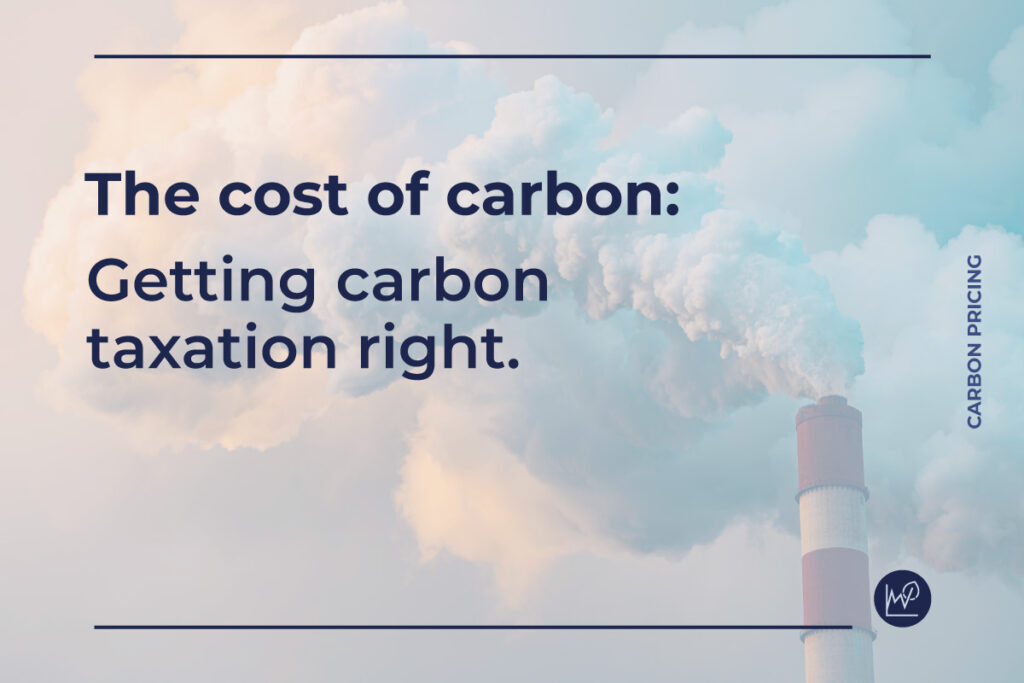Listen to article
Taxation goes back 5,000 years and has since caused various degrees of public outrage. Taxes can be collected for a common good, for instance public healthcare or schools. Taxes can also be collected to address a public bad, for instance air pollution. The idea of taxes that address environmental public bads, negative externalities, emerged around 100 years ago, supported by among others Arthur Pigou, hence the expression Pigovian tax [1].
The polluter pays principle
Taxes addressing negative externalities such as air pollution started to be implemented during the 1980s. Facing the environmental crisis in 1960s, the Organization for Economic Cooperation and Development (OECD) introduced the polluter pays principle in 1972, giving the theoretical basis for implementing environmental taxation.[2] During the 80s, governments introduced emission taxes, energy taxes, and sulfur taxes. During the 90s also the first carbon taxes were introduced.
In the early 1990s, Denmark, Finland, Norway and Sweden introduced carbon taxes and other countries soon followed suit. Currently, 39 carbon taxes have been implemented worldwide, some of which in the global south.
Carbon taxes as a market-based instrument
Carbon taxes target carbon dioxide emissions, which are a negative externality – a cost to society through the harm that it causes to the environment. A carbon tax is a way to internalize that cost. Carbon taxes are regarded as a market-based instrument since companies can choose to reduce emissions or pay the tax. It thus creates an incentive to invest in low-carbon solutions, energy efficiency or renewable energy.
There are advantages of applying a carbon tax compared to other policy instruments such emissions trading. For instance, “the Swedish experience shows that a carbon tax can be easy to implement and administer, at low costs to authorities and operators. This is particularly true if existing revenue collecting systems, such as systems for levying other excise taxes on fuels, are already in place. Another feature of the carbon tax that reduces costs associated with its administration is that tax rates in Swedish tax law are expressed in common trade units (volume or weight)”.[3]
The carbon tax backlash
Carbon taxes address public bads, and they are easy (relatively) to implement and follow the polluter-pays-principle. Why is public perception of carbon taxes then not always generally positive?
Obviously, there are challenges and caveats where governments need to be careful. A carbon tax in one country may distort competitiveness if carbon taxes are not introduced in other countries where similar goods are produced. It may also lead to higher costs for households which is a key concern in countries where large parts of the population have limited capacity to manage higher fuel or energy costs.
Discussions have emerged for instance in Canada where the impact of the tax is questioned – since the neighbouring US does not have a similar tax. Indeed, industrial competitiveness is an issue that probably any country would face unless competitors also take action.
Increased costs of energy due to a carbon tax for companies will have different impacts in different countries depending on the possibility of passing the costs on to consumers. In the EU this has been possible due to liberalized electricity markets where electricity prices are set on the market. At some point, electricity prices give rise to public discontent even in countries where households have greater purchasing power. In some cases, the tax burden can be distributed over a full value chain, in other cases, a large part of the increased costs for companies is passed on to the consumers, who may have limited to options to reduce or replace their consumption. One can then question if the guiding principle for carbon taxation is still adheres to the polluter-pays principle.
Who really pays the price?
The other complaint levelled against the carbon taxes in Canada is that they negatively impact the economy of households since they do not have any realistic alternatives to change consumption behaviour.[4] There are calls for ending the tax, even though there is rebate system in place: Most people in Canada get money back, about 90 per cent of the money goes back to families through “Canada Carbon Rebate” payments.[5]
The message that carbon tax is necessary for combatting climate change and that it will have a positive economic impact in the long-term is difficult to communicate when households face immediate cost increases. This is even more tricky during a downturn or a cost-of-living crisis. It could instead be advantageous to delay implementation of a carbon tax or reduce other taxes (tax shift) for the short-term.[6] Any reduction in other taxes will though reduce the fiscal space created by the carbon tax, but for a shorter term, maybe that is acceptable.[7] There are however examples of tax shift as a more prominent strategy to taxation.
Shifting the tax burden
Tax shift or tax swap is a change in taxation that eliminates or reduces one or several taxes and establishes or increases others while keeping the overall revenue (and tax burden) the same.
Again, using the example of Sweden, the implementation of the carbon tax was part of a major tax reform in 1990-1991 aiming at a tax shift or “green tax-switch. In 1990-1991, the marginal income tax rate for individuals was significantly reduced, lowering the highest rates from 80 percent to 50 percent. The corporate tax rate was lowered from 57 to 30 percent (while the corporate tax base was broadened), and capital income—interest, dividends, and capital gains—were taxed at a uniform rate of 30 percent.[8]
A shift from using traditional taxation to tax pollution works in countries where there are several tax schemes to play with, and where the tax shift will show in the wallets of households (Sweden). Cushioning a carbon tax with an income tax cut in a developing country may not work. For instance, while roughly 70% of Sweden’s population pay income tax, the figure for Thailand is about 14%.[9] Thus, this type of tax shift would not benefit a large part of the population that do not pay income tax. Rather, fuel and other costs would increase with no compensation through a reduction in income tax.
Conclusions
One of the main weaknesses of carbon tax is its potential regressive impact on household welfare. It is likely that it hits the poor relatively harder than the rich. By increasing the costs of carbon-intensive products such as energy and transport, low-income households bear a disproportionate burden of these increased costs relative to their incomes.[10]
Some of the lessons from carbon taxes in developed countries are relevant for developing countries, but not all. A shift from using traditional taxation to tax pollution has shown to work in countries where there are several tax schemes to play with, and where the tax shift will show in the wallets of households (Sweden). It is an interesting approach that could be explored in developing countries in the future. However, the existing tax being shifted should probably not be income tax.
Footnotes and references
[1] Pigou, Arthur C., 1920, The Economics of Welfare (London: Macmillan).
[2] Zhe Tan, Yufeng Wu, Yifan Gu, Tingting Liu, Wei Wang, Xiaomin Liu,’ An overview on implementation of environmental tax and related economic instruments in typical countries, Journal of Cleaner Production, Volume 330, 2022, 129688, ISSN 0959-6526.
[3] Sweden’s carbon tax, Government Offices of Sweden.
[4] Canadians pay the price for Trudeau’s carbon-tax failure, Franco Terrazzano, Canadian Taxpayers Federation.
[5] Canada’s carbon pricing (a.k.a. “carbon tax”) explained, David Suzuki Foundation
[6] Roberton C. Williams III (2015) Macroeconomic Effects of Carbon Taxes in Ian W.H. Parry (Editor) Implementing a US Carbon Tax Challenges and Debates. Routledge
[7] Carbon Pricing for Green Recovery and Growth, ADB, November 2021
Note: Interesting thing here is that an emissions trading system, compared to a carbon tax, is inherently countercyclical as demand will decrease due to lower economic activity and the price of allowances will go down.
[8] Looking Back on 30 Years of Carbon Taxes in Sweden, Samuel Jonsson, Anders Ydstedt, Elke Asen, The Tax Foundation, September 2020.
[9] Revenue Department plan intends to add some 500,000 taxpayer 16 Nov 2020, Bangkok Post, © Bangkok Post PCL. All rights reserved.
[10] Berahab, R. From Theory to Practice: Making Carbon Pricing Work. Policy Paper, Policy Center for the New South, Morocco




